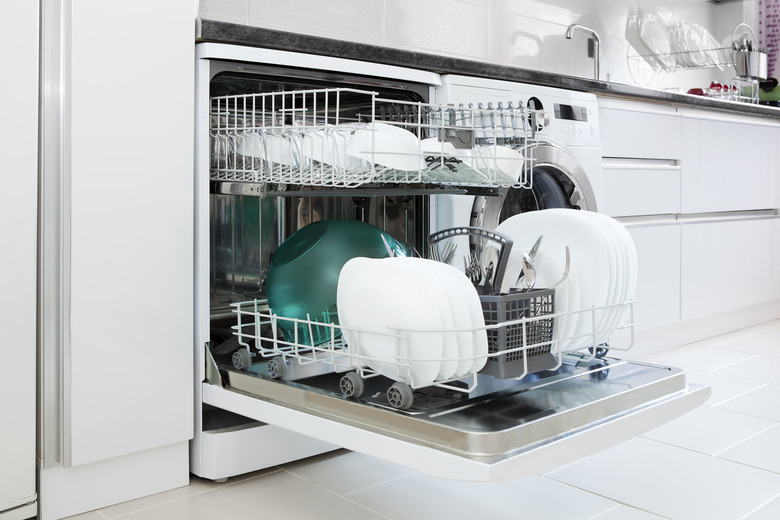How To Flush A Dishwasher Drain Hose
If your dishwasher drain hose is clogged, your dishwasher won't drain. For many people, the prospect of living without a functioning dishwasher is too horrible to imagine. But instead of trying to unclog the dishwasher drain with Drano or other chemical dishwasher unclogging products, you can remove the drain hose from the dishwasher and clear it out.
Don't Use Drano
Don't Use Drano
While we often pour Drano down the sink or shower when we have a clogged drain, you don't want to unclog a dishwasher drain hose with Drano. One of the reasons is because Drano contains sodium hydroxide and is strong enough to damage a plastic dishwasher drain hose, which is much thinner than the PVC pipe used for drain pipes. This is true not just for Drano, but for any chemical drain cleaner.
Another much more important reason not to use Drano in a dishwasher is because some of it may remain in the drain pump and splash onto your dishes while the dishwasher is running. A better idea is to make a homemade solution of dishwasher unclogging products. Pour a mixture of vinegar, baking soda and hot water into the basket at the bottom of the dishwasher, let it sit for a while and run it through the drain cycle as an alternative to Drano.
How to Flush a Dishwasher Drain Hose
How to Flush a Dishwasher Drain Hose
Things Needed
-
Flat head screwdriver
-
Phillips screwdriver
-
Nut driver
-
Channel lock pliers
-
Garden hose
Step 1
If your dishwasher drain hose is clogged after combining the homemade dishwasher unclogging products, locate the dishwasher circuit breaker and turn it off. Open the dishwasher door and unscrew the two screws securing the dishwasher to the countertop. Remove the lower kick plate located under the door. There are usually two screws holding the plate on, though some models snap on and off.
Step 2
If there is enough slack in the water supply line and electric wire, pull the dishwasher out from under the counter. If not, disconnect the wire by removing the wire nuts in the electrical junction box under the dishwasher. Turn off the water supply valve under the sink and disconnect the water supply using a 5/8-inch wrench to unscrew it. Use a small bowl to catch any water remaining in the water supply line. Then pull the dishwasher out.
Step 3
Loosen the drain hose clamp with a screwdriver and disconnect the hose from the dishwasher. Use a bowl if the dishwasher drain hose has water in it. Disconnect the other end of the drain hose under the sink by loosening the clamp and pulling it off of the hose connection. This connection may be part of the sink drain or it may be located on the garbage disposal.
Step 4
Pull the hose out and check for any kinks or cracks. It is not uncommon for a dishwasher drain hose to kink and cause blockages. If the hose is kinked or cracked it will need to be replaced. If the hose looks good, gently bend it back and forth to dislodge any solid clogs. Run a garden hose at high pressure through the drain hose until it runs through clearly.
Step 5
Reconnect both hose clamps. Reconnect the water supply and secure the wire nuts in the junction box. Push the dishwasher back and secure it to the countertop. Replace the kick plate. Turn on the water shut-off valve under the sink and the circuit breaker. Test the dishwasher.
